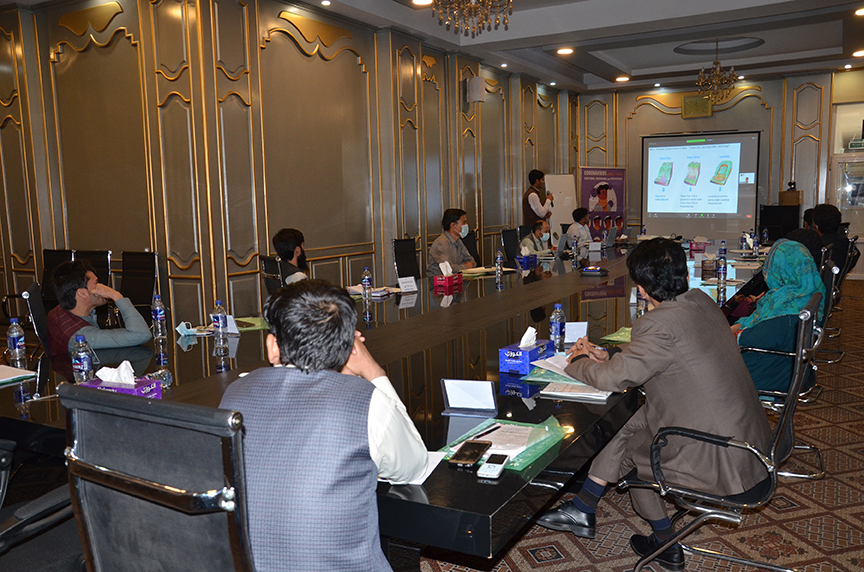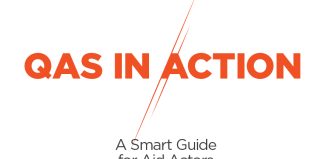Introducing new Technologies and enhancing local DRR capacities to ensure efficient disaster management in hazard prone regions of Afghanistan

A ten-day learning workshop, introducing, Japanese technology and experiences on Disaster Risk Reduction (DRR) tools and methodologies was organised for participants and partners of Community World Service Asia[1]’s DRR project in Afghanistan. The workshop focused on enhancing participants’ skills on planning, designing, and implementation of DRR projects and other supporting infrastructures.

The virtual workshop, which was led by CWS Japan and Japan Conservation Engineers Company and co-facilitated by CWSA, was divided into three sessions, the first of which took place in early July. Staff from National Water Affairs Regulation Authority (NWARA), ANDMA[2], PDMA[3] Laghman and Nangarhar, Aga Khan Development Network and community members from Laghman and Nangarhar participated in these sessions. The Environmental Sciences faculty of Kabul University and Community World Service Asia’s DRR team also participated. ANDMA’s Deputy State Minister, and Director of International Relationship Affairs, were invited as guests of honour at the opening of the session.

During the course of the workshop, participants learned various disaster control and management mitigation strategies and how they could maintain and monitor DRR infrastructure. Using Japans’ early disaster warning, countermeasures, area timelines, and evacuation plan as a case study, participants discussed and learned how to apply and contextualise similar systems in the Afghanistan context. Though Afghanistan’s disaster risk management is currently behind on efficient evacuation strategies, participants agreed that effective evacuation strategies must be incorporated in DRR plans to ensure an increased awareness and resilience among local communities.
Takeshi Komino, Secretary General of the ADRRN Tokyo Innovation Hub, shared information on Mountain Stream Control and various Mountain Stream Measures. Participants discussed and learned new flood control and landslide prevention techniques, and debris flow management mitigation and prevention approaches in this session.

Introducing Chisan and Sabo technologies, participants learned new and different interventions of constructing strong DRR supporting infrastructures. The Sabo project’s conservation goal is located downstream, which implies that Sabo technology attempts to avoid sediment attacks near residential areas. Forest conservation in Chisan, on the other hand, is a countermeasure to the causes of landslide disasters, such as mountainside erosion prevention and groundwater management.

Measuring unstable sediments along the valleys was a new and a key take-away for most participants. During the sessions they learnt the practical technique of measuring unstable sediments with the help of marked-up poles and steel rods.
Participants’ Learning:
“The training was beneficial, and I learned a lot about the various DRR arrangements in Japan. I also learnt about the benefits of DRR buildings, Japanese disaster preparedness, landslide and flood control, and evacuation procedures. When used in the context of Afghanistan, this knowledge will prove to be useful and will save many lives.”
Sayed Ilyas Sadat, ANDMA – Laghman
“Incorporating evacuation plans into Afghanistan’s disaster risk management strategies would improve disaster preparedness and response at all levels. We intend to produce and modify DRR and Hazard maps in the local communities that are located in hazardous regions. During a calamity, these maps will assist in finding safe routes and evacuation centres. The workshop has equipped us with important information, influencing us to change our policies and guidelines in order to build resilient communities across Afghanistan.”
Izatullah Kamily, ANDMA – Central
“The training topic was very relevant to me as a professor in the Faculty of Environmental Sciences. The knowledge I acquired about risk mitigation measures for landslides, floods, and debris flows will help me update my lectures and provide students with new information and a better grasp of disaster management. The two-day workshop’s most intriguing subjects were flood control and landslide DRR infrastructure. The Chisan and Sabo technologies were very interesting and something new to me, and I feel that they will be beneficial if adopted effectively in Afghanistan.”
Sharifullah Peroz, Kabul University
[1] CWSA
[2] Afghanistan National Disaster Management Authority (ANDMA)
[3] Provincial Disaster Management Authority






